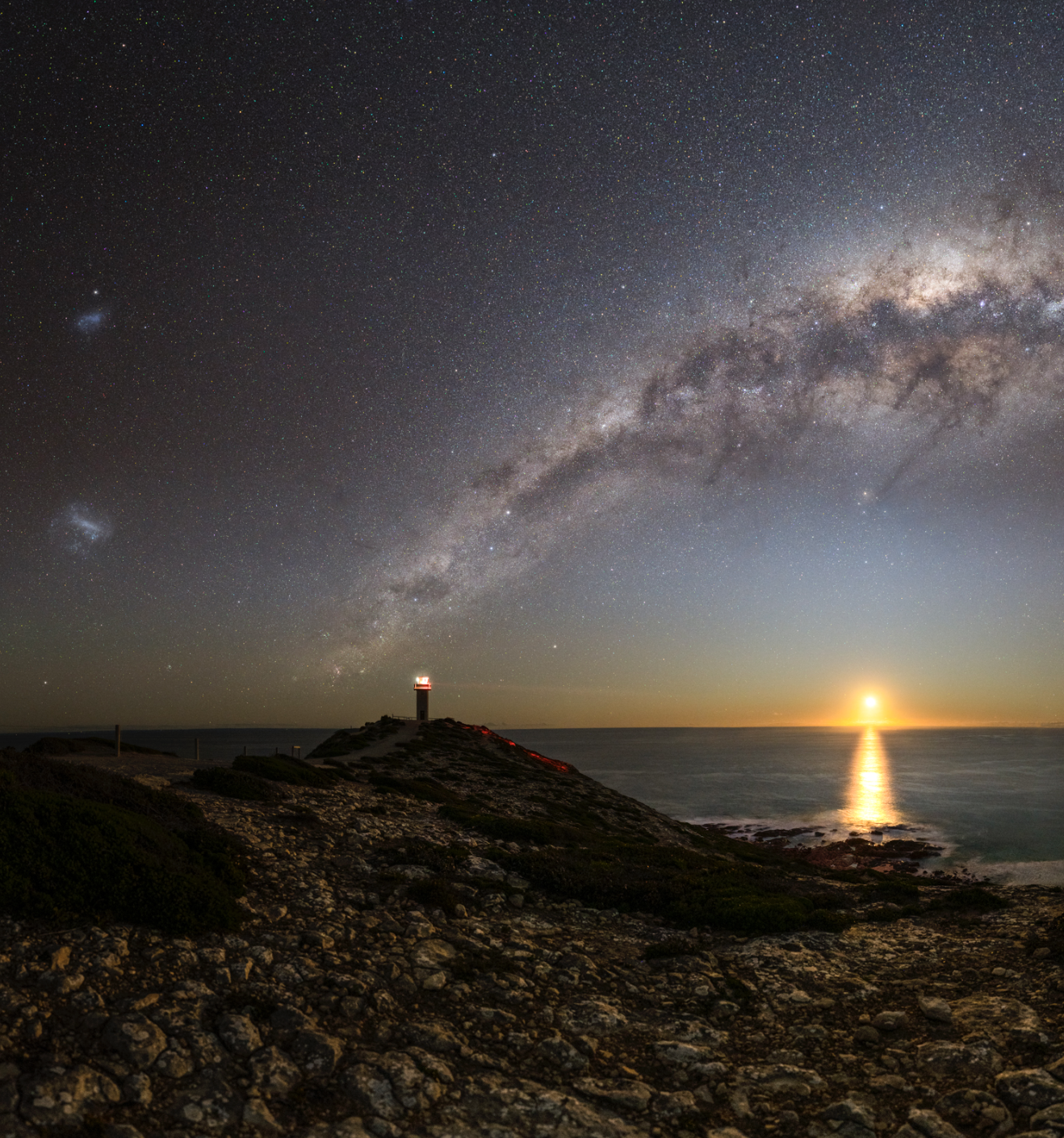
South Australia is home to some of the darkest skies in the world. Below is my top locations to capture the Milky Way from these iconic landscapes.
-

Encounter Bay
At just over an hours drive from Adelaide make this location one of the easiest to add to your bucket list. Encounter bay is famous for its beautiful coastline. With a South Eastern facing horizon makes this perfect for capturing those famous sunrises, but more importantly the Milky Way core rising. From the pre dawn months of February to just after sunset in the months of May you can capture it rising.
Tip: Best location would be from Petrel Cove, encompassing the rocks along the foreshore.
-

Kuipto Forest
As we enter into the winter months from June, we’re blessed in the Southern Hemisphere to have the Milky Way core positioned directly over head. This can be a challenge to create compositions, unless you have very tall object in the foreground. A perfect place to capture the core overhead is in our state forests. My favourite would be Kuipto, less than an hour from Adelaide and easily accessible. Remember to follow any restrictions stated on entry.
Tip: During Autumn you might be able to spot the elusive Ghost Mushrooms. -

Second Valley
A special place that I love to visit even if not imaging the night sky. The Fleurieu Peninsula is home to some of the most picturesque coastline in the world. The cliffs that line the foreshore create some of the most amazing photographic compositions. At just over an hours drive from Adelaide makes it a great location for an evening photographic adventure. The best time is from April just after sunset when the Milky Way core has started to rise.
Tip: A great location is just around the on the rocks looking back at the jetty.
-

Lake Bumbunga
Salt lakes hold a special place in my photography career. They’re a beautiful part of the South Australian landscape, something very unique we should appreciate and most importantly visit. Lake Bumbunga at Lochiel, located just over an hour from Adelaide is one of the easier to access Salt Lakes. The position of where you park your car gives you an eastern view over the lake, making it perfect to capture the Milky Way core rising over the lake. If you’re brave from the pre dawn hours in February you will start to see it rise, then from April a more comfortable hours after sunset.
Tip: is to get close to the water to capture those reflections, but be very careful of the quicksand mud. -

Innes National Park
At the bottom of the Yorke Peninsula you will fine some of the most dangerous coastline in South Australia. Many ships have best along with many lives. Being so far from major cities, means it’s going to have amazing dark skies. A great location to visit for a weekend, ever better if you love the outdoors and enjoy camping. The iconic cliffs facing the southwestern hozion makes it perfect for capturing the Milky Way arc setting over the ocean. From the months of August to October is the best time to capture the Milky Way.
Tip: A prefect and safe location would be the famous Stenhouse Bay lighthouse lookout.
-

Burra
If you’re visiting the famous mining town of Burra, then your most definitely the famous Midnight Oil house should be on your list. A great location to capture the Milky Way core rising behind the house. From the months of February you can capture it in the pre dawn hours, or around May just after sunset.
Tip: Cars can be a hindrance with lights, however can be a positive and help illuminate the house for that perfect exposure.
-

Lake Bonney
The most famous Lake in South Australia for photographers. This place has endless photographic compositions, it never disappoints clear skies or cloud. The Lake is positioned perfect for capturing the Milky Way most of the year. From the months of February - July from the Western shores you can capture the Milky Way rising over the lake. From the pre dawn hours of July to October you can capture the Milky Way setting, imaging from the eastern shore line.
Tip: This place is all about capturing those reflections, so pick a night with little to no wind.
-

Deep Creek
At the bottom of the picturesque Fleurieu Peninsula, Deep Creek National Park should be on everyone’s bucket list. Great place to visit on the weekend, however even better if you enjoy camping under the stars. From the months of September the famous Blow Hole Beach is a favourite place to capture the Milky Way setting over the ocean, however you require a 4WD to drive to the beach.
Tip: Can be a windy location, so make sure you use a study tripod.
-

Wilpena Pound
Saving the best to last. The darkest skies I’ve ever imaged was from the Flinders Ranges. Wilpena Pound is a perfect location for a weekend getaway, just over 5 hour drive from Adelaide, with no need for a 4WD makes it perfect for everyone. Starting from the month of February you will start seeing the core of the Milky Way rising in the western sky, unfortunately it doesn’t rise over Wilpena, however the rugged landscape and hills all around will not disappoint to create that memorable photo. Starting in July - October the Milky Way core arc will start setting over the Pound. You need to position yourself to the east of the Pound. There’s plenty of lookout locations that are easy to find even in the dark.